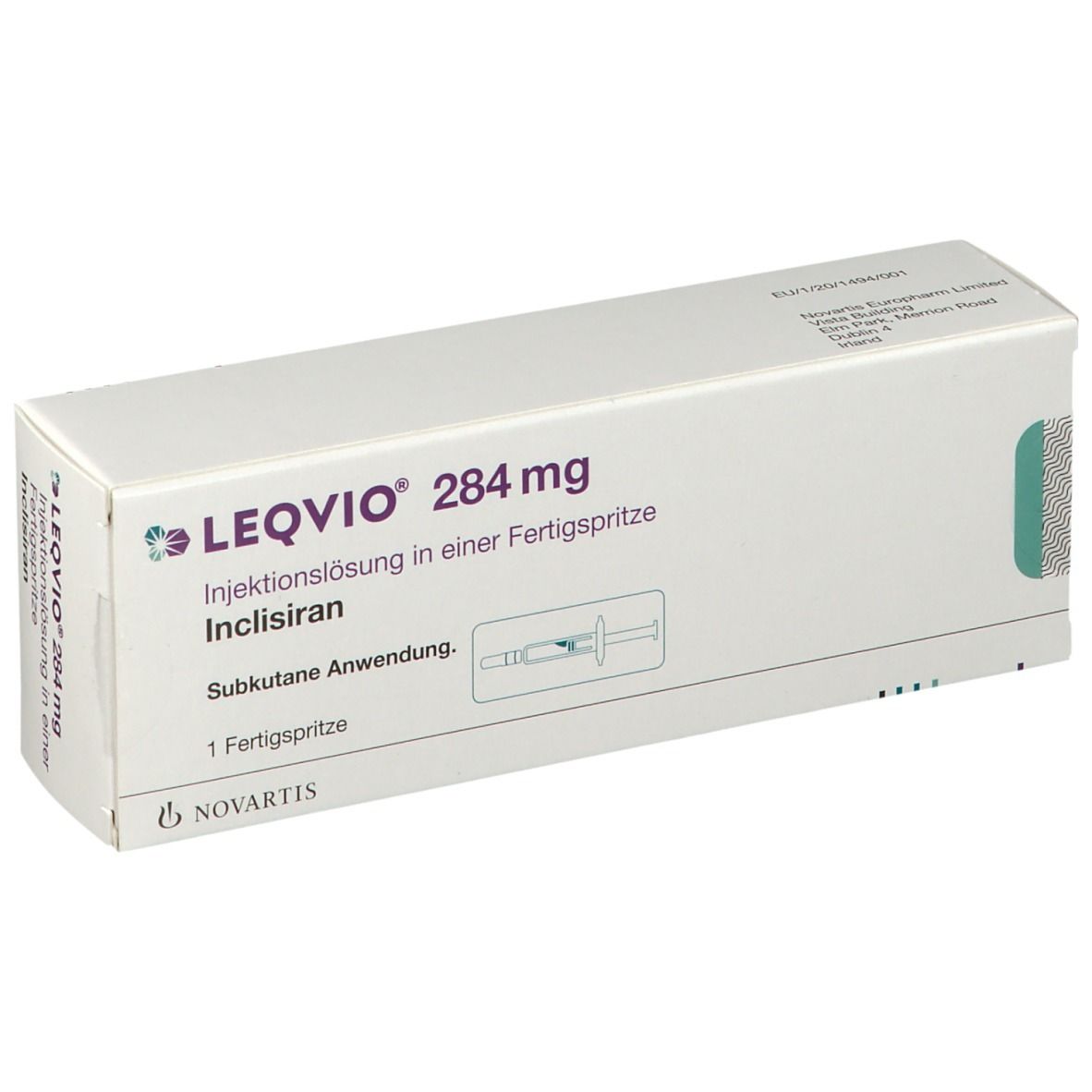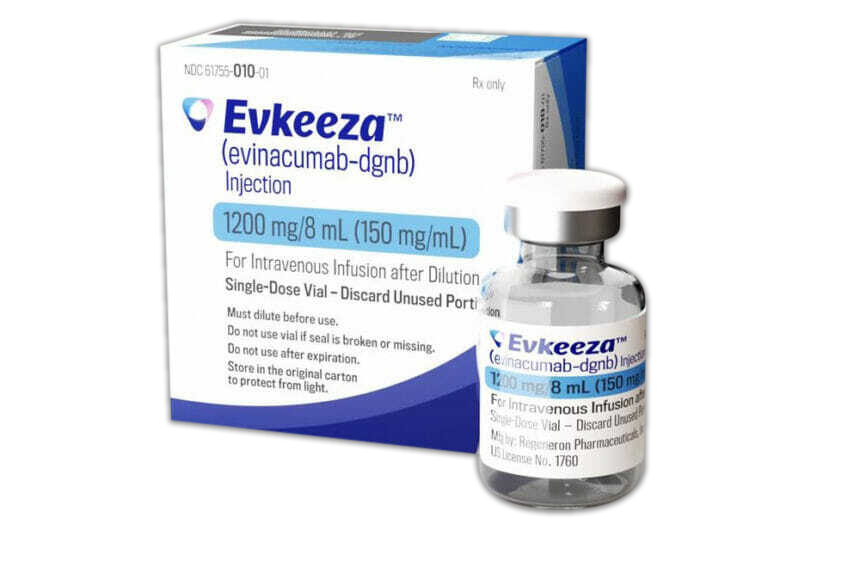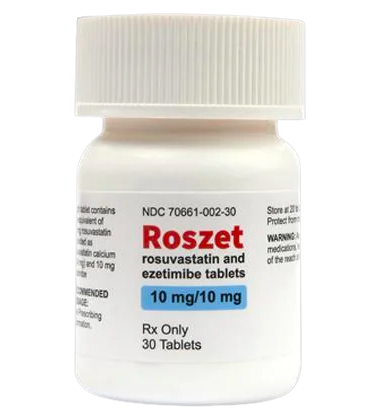New Hypercholesterolemia treatments 2024
New Hypercholesterolemia Treatments 2024
Hypercholesterolemia is a medical condition characterized by high levels of cholesterol in the blood, which can increase the risk of cardiovascular diseases such as heart attack and stroke. Cholesterol is a fatty substance essential for building cells and producing hormones, but an excess can lead to the buildup of plaque in the arteries, known as atherosclerosis. This condition can be inherited, known as familial hypercholesterolemia, or it can be the result of unhealthy lifestyle choices such as a diet high in saturated fats and lack of physical activity. Symptoms are not typically present, so it is often diagnosed through blood tests. Early detection and management are crucial to prevent serious complications.
When considering treatment options for hypercholesterolemia, it is important to discuss with a healthcare provider to determine the best approach, which may include lifestyle changes and medication. Lifestyle modifications such as diet, exercise, and weight management are often the first line of defense. Medications such as statins are commonly prescribed to lower cholesterol levels and reduce the risk of cardiovascular events. Other drug options include cholesterol absorption inhibitors, bile acid sequestrants, and PCSK9 inhibitors, which may be used alone or in combination with statins. The choice of medication will depend on the individual's overall health, cholesterol levels, and potential side effects.

Treatment options
| Treatment option | Estimated cost | Efficacy | Eligibility |
|---|---|---|---|
| Statins (e.g., Atorvastatin, Simvastatin) | $15 - $50 | Can lower LDL cholesterol by 30% to 50% | Adults and children over 10 with high LDL levels |
| PCSK9 inhibitors (e.g., Alirocumab, Evolocumab) | $450 - $580 | Can lower LDL cholesterol by approximately 60% | Patients with atherosclerotic cardiovascular disease or familial hypercholesterolemia |
| Bile acid sequestrants (e.g., Cholestyramine, Colestipol) | $40 - $80 | Can lower LDL cholesterol by 15% to 30% | Adults who cannot tolerate statins |
| Cholesterol absorption inhibitors (e.g., Ezetimibe) | $20 - $90 | Can lower LDL cholesterol by 18% to 25% | Adults and children over 10 with high LDL levels |
| Fibrates (e.g., Fenofibrate, Gemfibrozil) | $15 - $100 | Primarily lowers triglycerides and can raise HDL cholesterol | Adults with high triglyceride levels |
| Niacin | $5 - $25 | Can lower LDL cholesterol and triglycerides and raise HDL cholesterol | Adults with high LDL or low HDL levels |
| Omega-3 fatty acids (e.g., Fish oil supplements) | $10 - $30 | Primarily lowers triglycerides | Adults with high triglyceride levels |
| Leqvio (Inclisiran) | $2,250 - $3,000 | Can lower LDL cholesterol by up to 50% when used with a statin | Adults with clinical atherosclerotic cardiovascular disease or familial hypercholesterolemia |
| Evkeeza (Evinacumab-dgnb) | $4,400 - $5,500 | Can reduce LDL cholesterol levels by 49% on average | Patients with homozygous familial hypercholesterolemia (HoFH) |
| Roszet (Rosuvastatin and Ezetimibe) | $300 - $350 | Combination can lower LDL cholesterol more than either component alone | Adults with high LDL levels, particularly those needing additional lowering beyond statins |
| Lifestyle changes (diet, exercise, weight management) | Varies | Can lower LDL cholesterol by 5% to 10% | All individuals, especially those with risk factors for cardiovascular disease |
Treatments options in detail
Statins
Statins are the cornerstone of treatment for hypercholesterolemia. They work by inhibiting the enzyme HMG-CoA reductase, which plays a central role in the production of cholesterol in the liver. Statins are effective at lowering low-density lipoprotein (LDL) cholesterol, commonly known as "bad" cholesterol, and are associated with a reduction in the risk of cardiovascular events. Commonly prescribed statins include atorvastatin, simvastatin, and rosuvastatin. These medications are typically well-tolerated, but may cause side effects such as muscle pain and an increased risk of diabetes in some individuals.
Ezetimibe
Ezetimibe is another medication used to treat hypercholesterolemia. It works by inhibiting the absorption of cholesterol from the small intestine, which leads to a reduction in the amount of cholesterol delivered to the liver, thereby lowering blood LDL cholesterol levels. Ezetimibe can be used alone or in combination with statins for additive cholesterol-lowering effects.
Bile Acid Sequestrants
Bile acid sequestrants, such as cholestyramine, colesevelam, and colestipol, bind to bile acids in the intestine, preventing their reabsorption. This causes the liver to use more cholesterol to produce bile acids, which in turn lowers the level of cholesterol in the blood. These agents can be used in combination with other cholesterol-lowering medications for greater effect.
Nicotinic Acid (Niacin)
Niacin, also known as nicotinic acid, is a B vitamin that can improve all lipid profiles when taken in high doses. It lowers LDL cholesterol and triglycerides and raises high-density lipoprotein (HDL) cholesterol, the "good" cholesterol. However, niacin can cause side effects such as flushing, itching, and gastrointestinal upset, and its use has declined due to the more favorable side effect profiles of other medications.
Fibrates
Fibrates are most effective at lowering triglyceride levels and may also help to increase HDL cholesterol levels. They are less effective than statins at lowering LDL cholesterol but can be useful in certain patients with high triglycerides or low HDL cholesterol levels. Common fibrates include gemfibrozil and fenofibrate.
PCSK9 Inhibitors
Proprotein convertase subtilisin/kexin type 9 (PCSK9) inhibitors, such as alirocumab and evolocumab, are a newer class of injectable medications that significantly reduce LDL cholesterol levels. They work by blocking the PCSK9 protein, which normally destroys the receptors responsible for removing LDL cholesterol from the blood. By preserving these receptors, PCSK9 inhibitors enhance the clearance of LDL cholesterol. These medications are especially useful for patients with genetic conditions that cause very high cholesterol levels or those who are intolerant to statins.
Leqvio (Inclisiran)
Leqvio (inclisiran) is a novel treatment for hypercholesterolemia that employs small interfering RNA (siRNA) technology to target PCSK9. By degrading the messenger RNA (mRNA) for PCSK9, inclisiran can sustainably reduce the production of PCSK9 in the liver, leading to lower LDL cholesterol levels. This medication is administered via subcutaneous injection and has a dosing schedule that involves an initial dose, a second dose at three months, and subsequent doses every six months. Inclisiran offers a new treatment option for patients who struggle with frequent dosing schedules or who have not achieved their LDL cholesterol targets with other therapies.
Evkeeza (Evinacumab)
Evkeeza (evinacumab) is an experimental treatment for hypercholesterolemia that targets angiopoietin-like 3 (ANGPTL3), a protein that inhibits the activity of certain enzymes involved in lipid metabolism. By blocking ANGPTL3, evinacumab can reduce LDL cholesterol levels. It is particularly promising for patients with homozygous familial hypercholesterolemia (HoFH), a rare genetic condition that leads to extremely high cholesterol levels. Evinacumab is administered intravenously and is currently under investigation for its efficacy and safety.
Roszet
Roszet is a combination medication that contains rosuvastatin and ezetimibe. Rosuvastatin is a statin that lowers cholesterol by inhibiting HMG-CoA reductase, while ezetimibe reduces intestinal cholesterol absorption. The combination of these two mechanisms of action in one pill can provide a convenient option for patients needing both medications and may improve medication adherence. Roszet is indicated for the treatment of hypercholesterolemia to reduce LDL cholesterol levels in patients who require additional lowering beyond what can be achieved with statins alone.
Lifestyle Modifications
In addition to pharmacotherapy, lifestyle modifications are an essential component of hypercholesterolemia management. These include dietary changes such as reducing the intake of saturated fats and cholesterol, increasing the consumption of fiber-rich foods, and incorporating plant sterols and stanols into the diet. Regular physical activity, weight management, and smoking cessation are also important for overall cardiovascular health and can contribute to lower cholesterol levels.
Experimental and Off-Label Treatments
Research into new treatments for hypercholesterolemia is ongoing. Experimental therapies include gene editing techniques, such as CRISPR-Cas9, which may one day allow for the precise correction of genetic mutations that cause hypercholesterolemia. Additionally, off-label use of certain medications, such as lomitapide and mipomersen, which are approved for HoFH, may be considered in specific cases of severe hypercholesterolemia that do not respond to standard treatments. However, these therapies can have significant side effects and are typically reserved for patients with limited treatment options.
Conclusion
The treatment of hypercholesterolemia involves a multifaceted approach that includes a variety of medications and lifestyle modifications. The choice of therapy is individualized based on the patient's specific lipid profile, the presence of other risk factors or diseases, and their response to treatment. It is essential for patients to work closely with their healthcare provider to determine the most appropriate treatment plan to manage their cholesterol levels and reduce the risk of cardiovascular disease.
Symptoms
Asymptomatic Nature of Hypercholesterolemia
Hypercholesterolemia, commonly known as high cholesterol, is often asymptomatic, meaning it typically does not present any symptoms. Most individuals with hypercholesterolemia are unaware of their condition until it is detected through a blood test. The absence of symptoms makes regular cholesterol screening important to identify and manage this condition early.
Xanthomas
In some cases, individuals with severe or long-standing hypercholesterolemia may develop physical signs. One such sign is the appearance of xanthomas, which are fatty deposits that can manifest as yellowish patches or bumps under the skin. These deposits are most commonly found on the Achilles tendons and around the eyelids (xanthelasma), but they can also appear on the elbows, knees, and buttocks.
Corneal Arcus
Another possible physical sign of hypercholesterolemia is corneal arcus, which is a gray or white arc visible above or below the outer part of the cornea — the clear, dome-shaped surface that covers the front of the eye. While more common in older adults, its presence in younger individuals can be indicative of high cholesterol levels.
Chest Pain and Coronary Artery Disease
Although hypercholesterolemia itself does not cause pain, it can lead to atherosclerosis, a condition characterized by the build-up of fats, cholesterol, and other substances in and on the artery walls. This can result in chest pain or angina, especially when engaging in physical activity or under stress. Atherosclerosis can progress to coronary artery disease, which is a significant symptom-related consequence of untreated hypercholesterolemia.
Heart Attack and Stroke
The most severe symptoms associated with hypercholesterolemia are those related to cardiovascular events, such as heart attacks and strokes. These occur when the build-up of plaque in the arteries becomes so severe that it significantly impedes blood flow or when a plaque ruptures, causing a blood clot. Symptoms of a heart attack may include chest pain, shortness of breath, and discomfort in the upper body. Stroke symptoms can include sudden numbness or weakness, especially on one side of the body, confusion, trouble speaking, difficulty seeing, dizziness, and loss of balance or coordination.
Peripheral Arterial Disease
Peripheral arterial disease (PAD) can also be a symptom of hypercholesterolemia. PAD occurs when atherosclerosis affects the arteries that supply blood to the limbs, usually the legs. This can lead to leg pain when walking, known as claudication, and in severe cases, can cause tissue death due to lack of blood supply, necessitating medical intervention.
Reduced Blood Flow to the Brain
Reduced blood flow to the brain due to atherosclerosis can lead to transient ischemic attacks (TIAs), often referred to as mini-strokes. Symptoms of TIAs are similar to those of a stroke but are temporary, typically lasting a few minutes to hours, and include sudden weakness, numbness, or paralysis, particularly on one side of the body, slurred speech, and loss of balance or coordination.
Abdominal Pain and Pancreatitis
In rare cases, extremely high levels of cholesterol can lead to pancreatitis, an inflammation of the pancreas, which can cause severe abdominal pain. This condition requires immediate medical attention as it can be life-threatening.
Impaired Cognitive Function
There is some evidence to suggest that high cholesterol levels may be associated with impaired cognitive function, including memory loss and confusion. However, the relationship between hypercholesterolemia and cognitive decline is complex and not fully understood.
Conclusion
While hypercholesterolemia is typically silent and symptomless, it can lead to serious health complications if left untreated. Regular screening and proactive management of cholesterol levels are crucial to prevent the development of symptomatic conditions that result from the progression of atherosclerosis and other cholesterol-related diseases.
Cure
Understanding Hypercholesterolemia Treatment Options
Hypercholesterolemia, commonly referred to as high cholesterol, is a condition characterized by elevated levels of cholesterol in the blood. It is important to clarify that, as of the current medical consensus, there is no outright "cure" for hypercholesterolemia. However, it can be effectively managed and controlled through a combination of lifestyle changes, medications, and in some cases, surgical interventions. The goal of treatment is to reduce the risk of cardiovascular diseases, such as heart attack and stroke, which are associated with high cholesterol levels.
Lifestyle Modifications
Lifestyle changes are often the first line of defense in managing hypercholesterolemia. These include adopting a heart-healthy diet that is low in saturated and trans fats, cholesterol, and sodium. Increasing physical activity and maintaining a healthy weight are also crucial steps. Dietary adjustments may involve increasing the intake of fiber-rich foods and those containing plant sterols and stanols, which can help reduce cholesterol levels. Avoiding tobacco smoke and limiting alcohol consumption are additional lifestyle changes that can positively impact cholesterol levels.
Medications for Hypercholesterolemia
When lifestyle changes are insufficient to achieve desired cholesterol levels, medications may be prescribed. The most commonly used drugs for lowering cholesterol are statins, which work by inhibiting the enzyme HMG-CoA reductase, responsible for cholesterol synthesis in the liver. Statins are effective in lowering low-density lipoprotein (LDL) cholesterol, which is often referred to as "bad" cholesterol.
Other medications include cholesterol absorption inhibitors, which prevent the absorption of cholesterol from the diet; bile acid sequestrants, which bind to bile acids and cause the liver to use excess cholesterol to produce more bile acids; and fibrates, which primarily lower triglycerides and can also have a modest effect on increasing high-density lipoprotein (HDL) cholesterol, known as "good" cholesterol.
Additionally, newer classes of drugs such as PCSK9 inhibitors can be used for patients who have a genetic condition leading to very high LDL levels or those who are at high risk for cardiovascular events and have not responded adequately to statins. PCSK9 inhibitors work by increasing the number of LDL receptors on liver cells, which helps to remove more LDL cholesterol from the blood.
Off-Label Medications and Emerging Therapies
Occasionally, medications approved for other conditions may be used off-label to treat hypercholesterolemia when traditional therapies are not suitable or effective. It is essential to consult with a healthcare provider before considering off-label medication use, as these drugs may not have been extensively studied for this particular purpose and may carry risks.
Emerging therapies for hypercholesterolemia are also under investigation. These include gene therapies targeting the underlying genetic causes of high cholesterol and new drugs that may have different mechanisms of action or improved efficacy compared to currently available treatments. Clinical trials are essential for evaluating the safety and effectiveness of these new therapies before they can be widely recommended for use.
Surgical and Procedural Interventions
In rare cases where hypercholesterolemia is severe and does not respond to other treatments, surgical or procedural interventions may be considered. One such procedure is LDL apheresis, which is a form of dialysis where LDL cholesterol is removed from the blood. This procedure is typically reserved for patients with familial hypercholesterolemia, a genetic disorder that results in extremely high cholesterol levels and a high risk of early-onset cardiovascular disease.
Liver transplantation may be an option for individuals with homozygous familial hypercholesterolemia, a severe form of the condition. However, this is a highly invasive and complex treatment that is used only in the most extreme cases.
Monitoring and Follow-Up
Managing hypercholesterolemia is an ongoing process that requires regular monitoring and follow-up with a healthcare provider. Blood tests to measure cholesterol levels are an essential part of this process, as they help determine the effectiveness of treatment and whether adjustments are needed. Patients should have their cholesterol levels checked at intervals recommended by their healthcare provider, and they should adhere to prescribed treatments, including lifestyle changes and medications.
It is also critical for patients to communicate with their healthcare providers about any side effects from medications or challenges with lifestyle modifications. Regular check-ups provide an opportunity to discuss these issues and to receive support and guidance in managing hypercholesterolemia.
Conclusion
In summary, while there is no cure for hypercholesterolemia, it is a condition that can be effectively managed with a comprehensive approach that includes lifestyle modifications, medications, and in some cases, surgical or procedural interventions. Ongoing research may provide new treatments in the future, but currently, the focus remains on controlling cholesterol levels to reduce the risk of cardiovascular complications.
Access Hypercholesterolemia medicines today
If Hypercholesterolemia medicines are not approved or available in your country (e.g. due to supply issues), you can access them via Everyone.org.
How Everyone.org works

Make an enquiry
Choose the medicine you want to access, answer a couple of questions, and upload your prescription to speed things up. We’ll get back to you within 24 hours.


Make an enquiry
Choose the medicine you want to access, answer a couple of questions, and upload your prescription to speed things up. We’ll get back to you within 24 hours.


Breeze through the paperwork
We'll guide you through the required documents for importing unapproved medicine, ensuring you have all the necessary information.


Get a personalized quote
We’ll prepare a quote for you, including medicine costs and any shipping, administrative, or import fees that may apply.


Receive your medicine
Accept the quote and we’ll handle the rest - sourcing and safely delivering your medicine.

Some text on this page has been automatically generated. Speak to your physician before you start a new treatment or medication.
Let's talk
If you have any questions, call us or send us a message through WhatsApp or email:
Contact us





